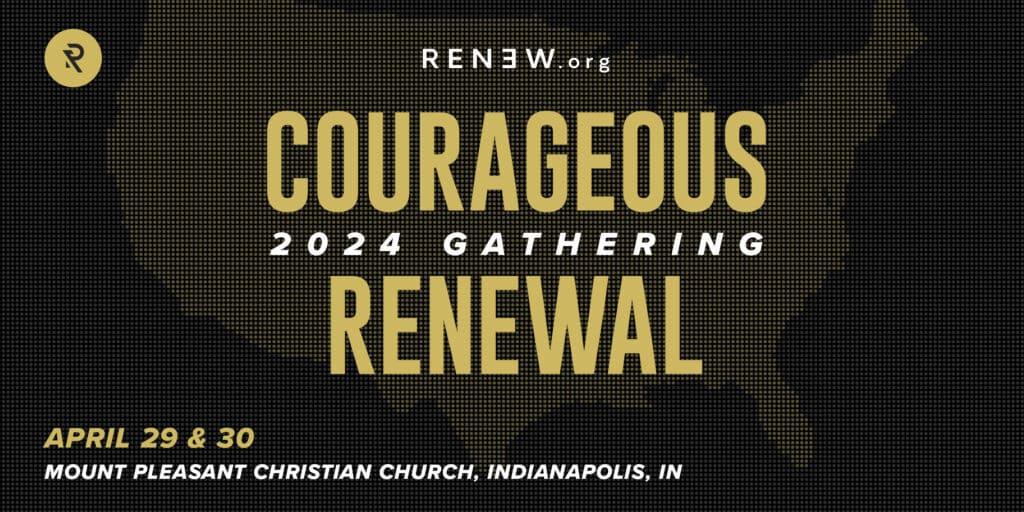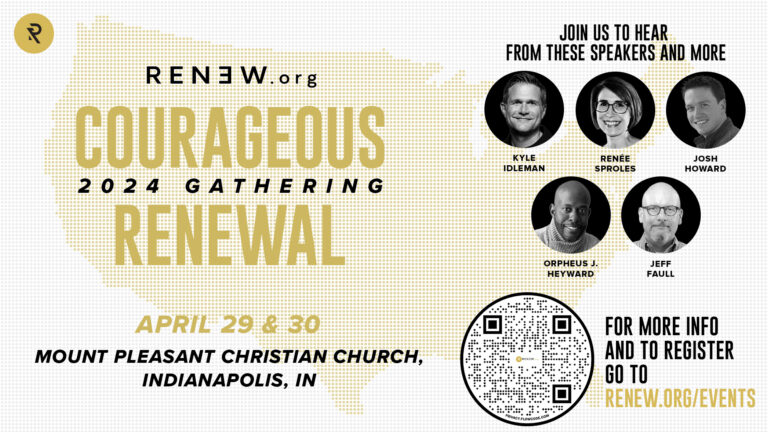What is the purpose of baptism? Baptism expresses faith in Jesus Christ for the forgiveness of sins. Baptism is like the disciple’s wedding ceremony. As wedding ceremonies make marriage concrete, so does repentance-confession-baptism seal and holistically solidify our relationship with Christ and his forgiveness.
Bill and Sue are in love, but they are not yet married. They have talked about the commitment and have been together for a long time. In fact, it’s been so long since they got together that they act like husband and wife. But they will technically not be married until they pledge their faith to each other with vows and some sort of ceremony. Their faith in and love for each other is the most crucial element in the relationship, but the ceremony is necessary for them to formally commit to a marriage so they can make the relationship officially permanent. In both the eyes of God and those of the state, the wedding ceremony establishes a new relationship, grounded in commitment.
In a like manner, many people are drawn to Jesus and his gospel. They believe in much of what the Bible says, and they do many things that make them seem just like those who are Christians. But like with marriage, they need to express their faith in Jesus through a formal commitment by pledging their faith in Jesus and having a ceremony through which they concretely rely on Jesus and his gospel. That’s when their forgiveness of sins is sealed.
“The wedding ceremony establishes a new relationship, grounded in commitment.”
In their book, Hard Sayings of the Bible, the writers nicely summarize how this matter was understood in biblical times. Kaiser and the other authors use the marriage ceremony analogy, too:
The normal point of salvation for Christians in the early church was baptism. Even here it is not the ritual itself or the water that saves, but the commitment that one makes to Jesus as Lord…salvation is a relationship. Baptism in Christianity, just as a wedding in marriage, is simply the way of entering into that relationship.[1]
In this way, we see that baptism is like the disciple’s wedding ceremony. As wedding ceremonies make marriage concrete, so does repentance-confession-baptism seal and holistically solidify our relationship with Christ and his forgiveness.
Too often people “accept Christ” by simply giving mental assent or superficially expressing a trust that Jesus died on the cross for their sins. Such a commitment can be shallow and can fail to involve the whole person. Unlike a private mental commitment—or something like it—when you make the conscious decision to repent, verbally confess your faith, and surrender your will to Christ in the ceremony of baptism, the commitment is more all-encompassing and final than merely saying the right thing about Jesus. The washing with physical water signifies the washing away of sins. It is both a physical and spiritual reality.
The purpose of baptism: “As wedding ceremonies make marriage concrete, so does repentance-confession-baptism seal and holistically solidify our relationship with Christ and his forgiveness.”
In the same way, as a wedding ceremony solidifies the commitment between husband and wife, baptism solidifies our acceptance of God’s grace and our new relationship with him. We summarize the analogy in this way: the ceremony is important, but the heart commitments in the ceremony are of the utmost importance. Baptism is the ceremony; God’s forgiveness and our faith in Jesus are the reason for the ceremony.
How Baptism Connects to Forgiveness
Baptism, not as a work or an act of merit but as the God-ordained mode of concretely expressing faith in Jesus, is the path we find in God’s Word. The following passages give us insight into how baptism connects us to the forgiveness of sins, as we express our faith in Jesus:
Acts 2:37-38: When the people heard this, they were cut to the heart and said to Peter and the other apostles, “Brothers, what shall we do?” Peter replied, “Repent and be baptized, every one of you, in the name of Jesus Christ for the forgiveness of your sins. And you will receive the gift of the Holy Spirit.”
The purpose of baptism: “Repent and be baptized, every one of you, in the name of Jesus Christ for the forgiveness of your sins. And you will receive the gift of the Holy Spirit.”
Acts 22:14-16: Then he said: “The God of our fathers has chosen you to know his will and to see the righteous one and to hear words from his mouth… And now what are you waiting for? Get up, be baptized and wash your sins away, calling on his name.”
1 Peter 3:20-22: God waited patiently in the days of Noah while the ark was being built. In it only a few people, eight in all, were saved through water, and this water symbolizes baptism that now saves you also—not the removal of dirt from the body but the pledge of a good conscience toward God. It saves you by the resurrection of Jesus Christ, who has gone into heaven and is at God’s right hand—with angels, authorities and powers in submission to him.
Each of these passages makes baptism God’s method of expressing faith in Jesus to receive the forgiveness of sins and salvation.
The purpose of baptism: “Not the removal of dirt from the body but the pledge of a good conscience toward God.”
Repent and Be Baptized…For What?
In Acts 2:37-38, Peter told the people to be baptized “in the name of Jesus Christ for the forgiveness of your sins.” Contrary to what some popular preachers say, this verse does not say that we are baptized because we are forgiven (something that happened before baptism). Those who make this claim often take the English word “for” and make it say we were baptized “for” (meaning “because of”) our sins have already been forgiven. This does not work with the Greek text. Instead, the linguistic construction clearly states that baptism puts a person into the state of the forgiveness of their sins. Baptism is “instrumental,” meaning that when our baptism expresses our faith in Jesus, it results in the forgiveness of sins.[2]
Each of these passages shows that for the early Christians, baptism was the God-given way to express one’s faith commitment to trust and follow Jesus Christ and enter into God’s kingdom (John 3:3-5). This is what the earliest Christians believed in the period just after the Bible was written and for hundreds of years after that time. They were taught by the apostles and knew the language in which these passages were written.[3]
The purpose of baptism: “Each of these passages shows that for the early Christians, baptism was the God-given way to express one’s faith commitment to trust and follow Jesus Christ and enter into God’s kingdom.”
Asking Jesus into Our Hearts
Many Evangelical churches do not follow what these passages teach. Instead they encourage people to receive Jesus as Lord and Savior through saying a prayer. In this prayer, people invite Jesus to come into their hearts. Some call it “asking Jesus into your heart” or saying “the sinners prayer.” We are concerned with the tendency of the sinner’s prayer to replace baptism as the God-given method for expressing saving faith and how it impacts a person’s understanding of conversion and forgiveness.
The idea of just saying a prayer for salvation cannot be found in the Bible (more on this in chapter nine of our book Baptism: What the Bible Really Teaches), but we are even more concerned that this approach too often leads to a shallow, transactional understanding of conversion.[4] A person thinks, God will forgive my sins if I will just stop and say a brief prayer and accept Christ. Many people have been led to believe that if they pause from their sinful life for a few moments to offer the sinner’s prayer, they receive salvation—even without repentance or a commitment to live a life of faith afterward. This is a problem because this type of faith does not save people. This is part of the reason why more and more evangelical leaders are calling for people to stop this practice, including respected pastors like J.D. Greear, recent president of the Southern Baptist Convention, who wrote a book called, Stop Asking Jesus into Your Heart.[5]
“We are concerned with the tendency of the sinner’s prayer to replace baptism as the God-given method for expressing saving faith.”
We hope to show a better way. We believe the better way will become clearer as we explore what God’s Word teaches us about baptism—as an expression of our faith—that it is for the remission of sins, just like the early Christians believed, as stated in the passages above and in the Nicene Creed of 381 A.D:[6]
I believe in one God the Father Almighty,
Maker of heaven and earth,
and of all the things visible and invisible. . .
I acknowledge one baptism for the remission of sins,
and I look for the resurrection of the dead
and the life of the world to come.
Amen.
The purpose of baptism: “We believe the better way will become clearer as we explore what God’s Word teaches us about baptism—as an expression of our faith—that it is for the remission of sins, just like the early Christians believed.”
[1] Walter Kaiser, Peter Davids, F.F. Bruce, and Manfred Brauch, Hard Sayings of the Bible (Downers Grove, Illinois: InterVarsity Press, 1996).
[2] Some dispute the English rendition of this passage, arguing that the preposition eis (“for the”) somehow means that people are baptized “because of the” forgiveness of sins (making baptism simply a symbol of salvation previously received). Technically and linguistically this is not correct. The English translations have it right—see Jack Cottrell, Baptism: A Biblical Study (Joplin, Missouri: College Press, 1989), 55-61. For the syntactical and grammatical background see Carroll D. Osburn, “The Third Person Imperative in Acts 2: 38,” Restoration Quarterly (1983): 81-84.
[3] The technical and scholarly support to this presentation is found in the highly respected work of Everett Ferguson, Baptism in the Early Church: History, Theology, and Liturgy in the First Five Centuries (Grand Rapids, Michigan: Wm. B. Eerdmans Publishing Co., 2009); and also, in the older work of G.R. Beasley Murry, Baptism in the New Testament (Grand Rapids, Michigan: Wm. B. Eerdmans Publishing Co., 1962). For information on the historical backgrounds of this view see David Fletcher, editor, Baptism and the Remission of Sins: An Historical Perspective (Joplin, Missouri: College Press, 1990). See also Jack P. Lewis, “Baptismal Practices of the Second and Third Century” Church,” Restoration Quarterly vol. 26 (1983): 1-17; and Everett Ferguson, The Early Christians Speak (Abilene, Texas: (ACU Press, reprint 1994). Our understanding is reflected in the Nicaeno-Constantinoplotan Creed of A.D. 381, which states, “I acknowledge one baptism for the remission of sins.” See The Creeds of Christendom, 3 Volumes, edited by Philip Schaff (Baker Book House: Grand Rapids, Michigan, 1996).
“I acknowledge one baptism for the remission of sins.” —Creed of A.D. 381
[4] See Bill Hull, Conversion and Discipleship: You Can’t Have One Without the Other (Grand Rapids, Michigan: Zondervan, 2016), and Bill Hull and Ben Sobels, The Discipleship Gospel (Nashville, Tennessee: HIM Publications, 2018).
[5] J.D. Greear, Stop Asking Jesus into Your Heart: How to Know For Sure You Are Saved (Nashville, Tennessee: B & H Books, 2013).
[6] Again, the technical and scholarly support to this presentation is found in the highly respected work of Everett Ferguson: Baptism in the Early Church: History, Theology, and Liturgy in the First Five Centuries (Grand Rapids, Michigan: Wm. B. Eerdmans Publishing Co., 2009); and also, in the older work of G.R. Beasley Murry, Baptism in the New Testament (Grand Rapids, Michigan: Wm. B. Eerdmans Publishing Co., 1962). For information on the historical backgrounds of this view see David Fletcher, editor., Baptism and the Remission of Sins: An Historical Perspective (Joplin, Missouri: College Press, 1990). See also Jack P. Lewis, “Baptismal Practices of the Second and Third Century Church,” Restoration Quarterly Vol. 26 (1983): 1-17; and Everett Ferguson, The Early Christians Speak (Abilene, Texas: ACU Press, reprint 1994). Our understanding is reflected in the Nicaeno-Constantinoplotan Creed of A.D. 381, which states, “I acknowledge one baptism for the remission of sins.” See The Creeds of Christendom, 3 Volumes, edited by Philip Schaff (Baker Book House: Grand Rapids, Michigan, 1996).
Excerpted from Tony Twist, David Young, and Bobby Harrington, Baptism: What the Bible Teaches (Renew.org, 2019).













